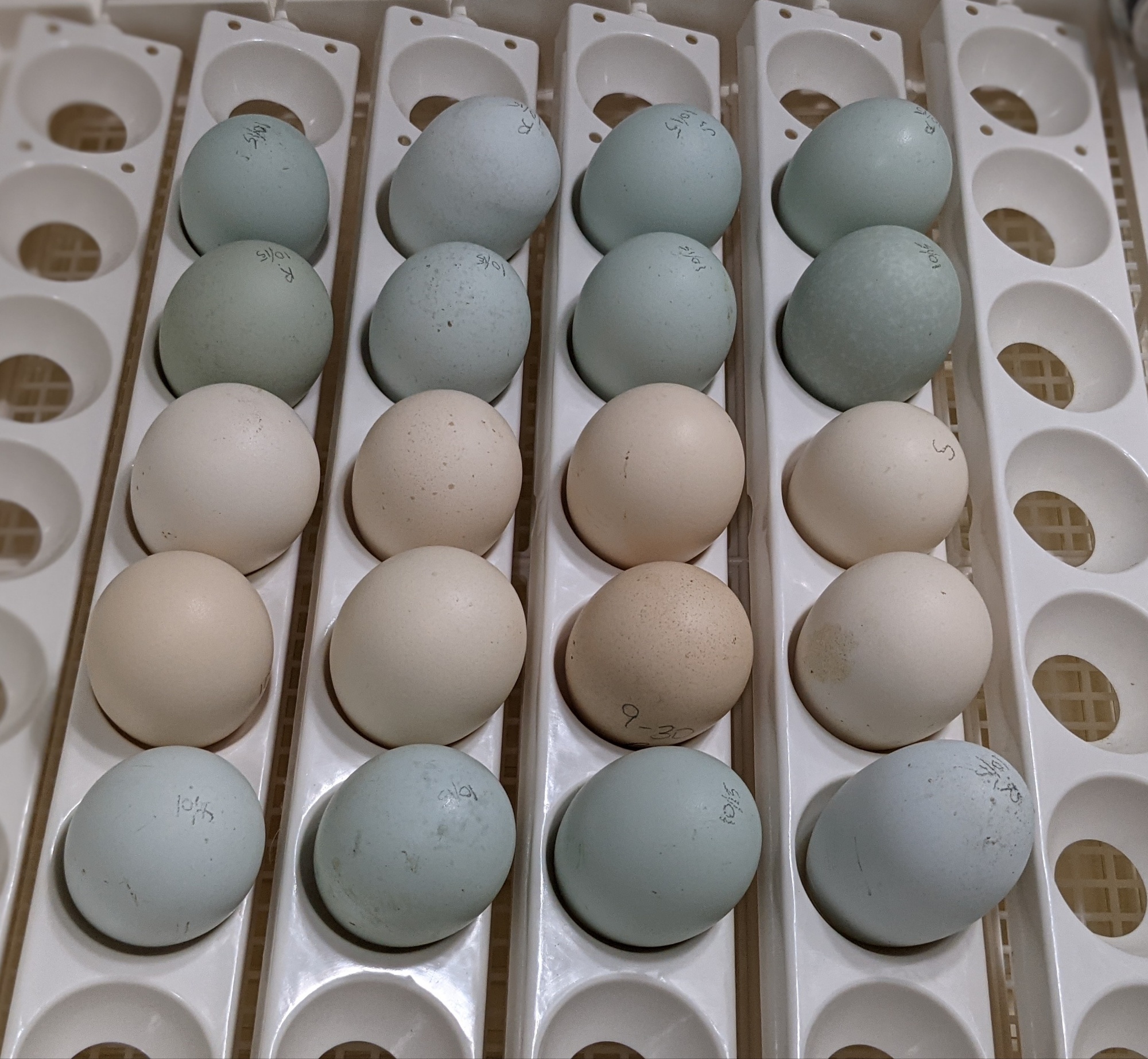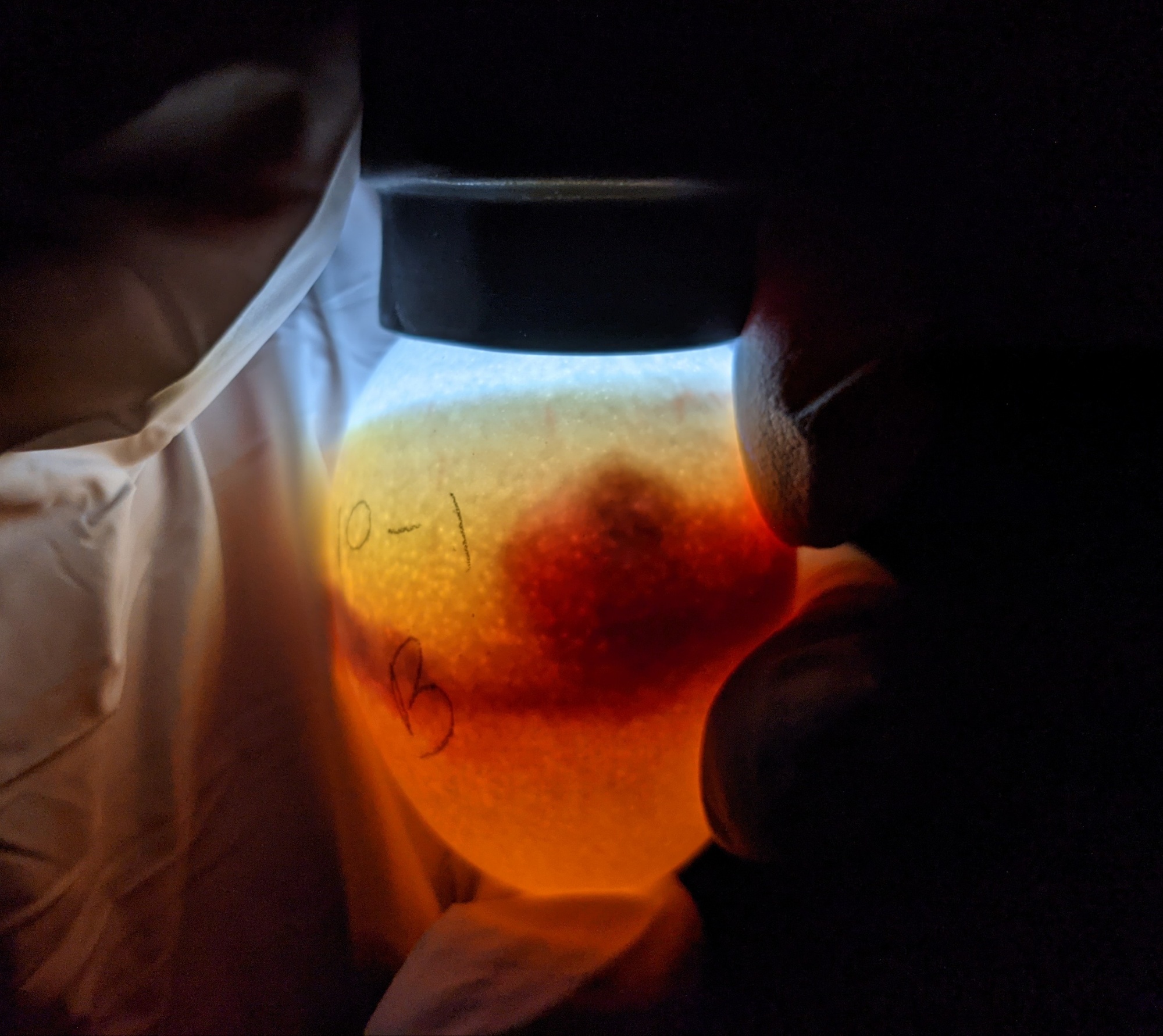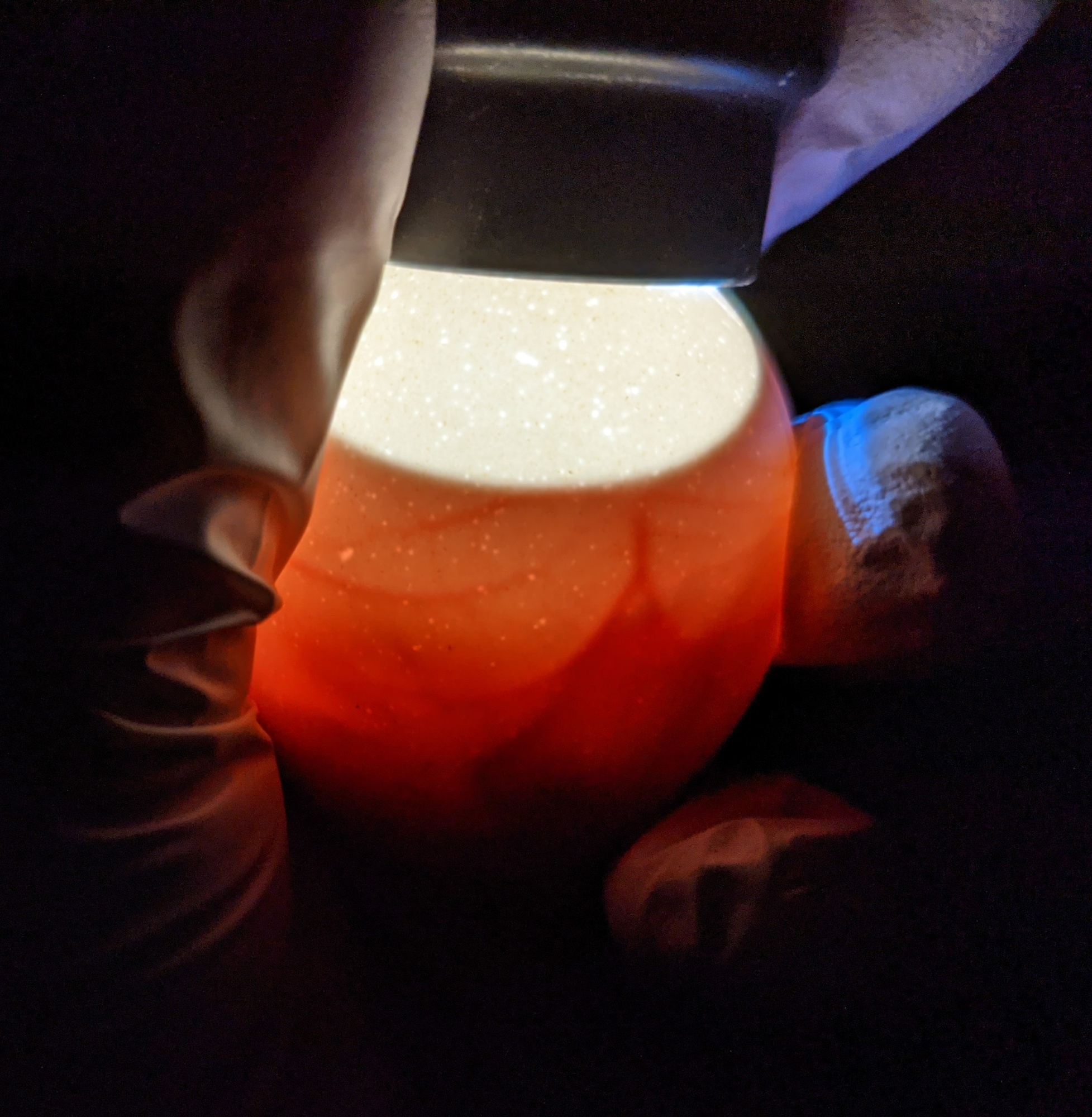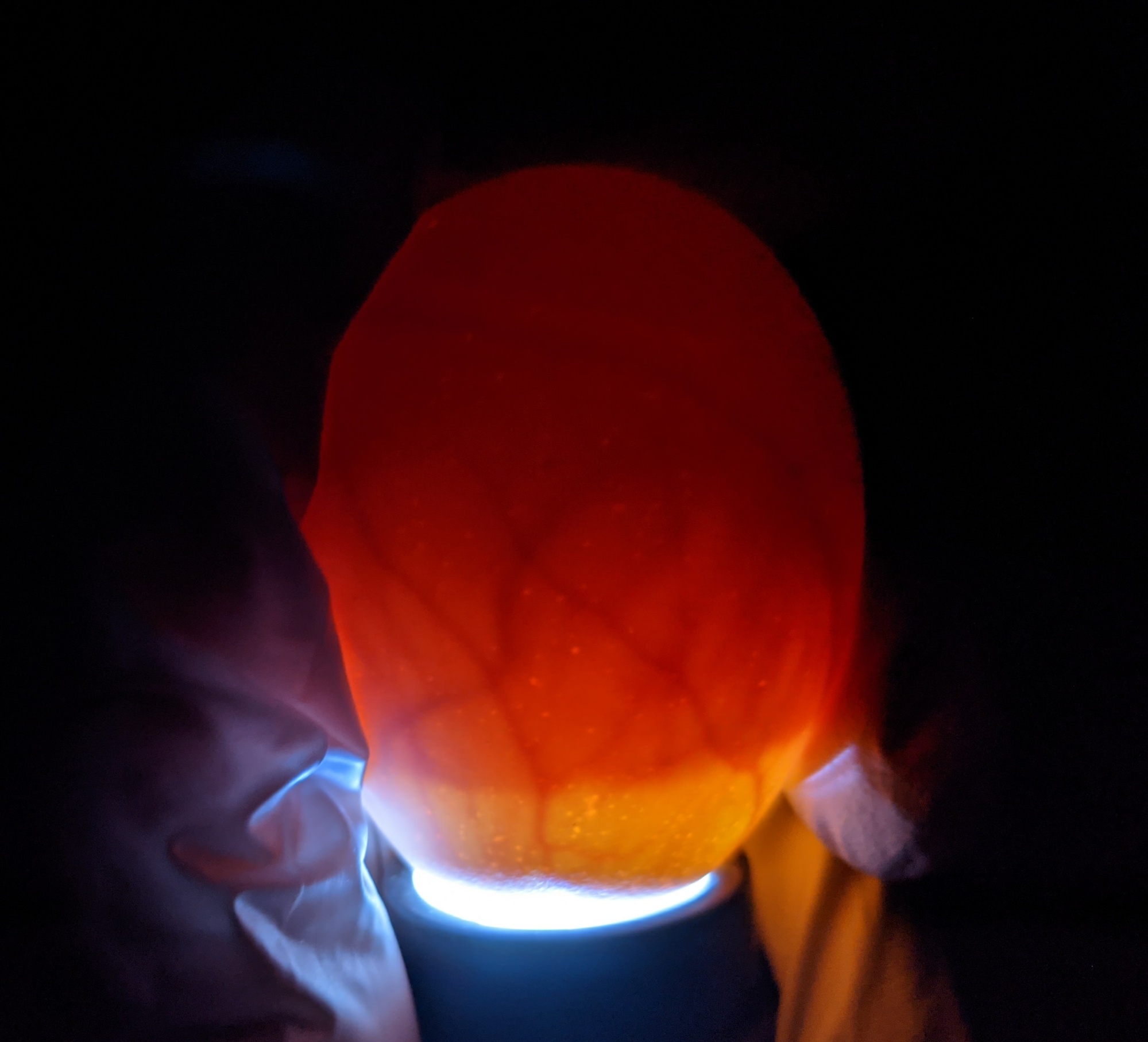
It’s been two weeks now since the shipped American Bresse eggs went into the incubator. 9 were left after the first candling (at day 7). Their incubation is now 2/3 complete – just one week to go! But how many will make it to lockdown?
First, the bad news: the smallest egg – really, a pullet-sized egg – quit. Candling showed where the embryo had begun to develop but stopped, leaving a dark mass inside the egg. Shining the light through the top also allowed me to verify that there were no active veins remaining.

The good news: the remaining 8 all appear to be growing well, with thick, active blood vessels.
In addition to checking developmental progress, I take the opportunity during candling to see how the air cells look. With just a week to go until hatch, there’s little time to affect the size of the air cells, but adjustments may still be possible by increasing or decreasing humidity. Fortunately, the air cells look to be right on track.

In a few days, I’ll start the hatcher and let it run for 24 hours. During this warm-up period, I’ll verify that the temperature is stable and make adjustments, as needed. After that, the eggs will go into “lockdown” – the three day period preceding hatch when the eggs are no longer turned and the chicks get into position to hatch.
It’s been a treat to incubate light-shelled eggs because I can easily see into them…the very dark Marans and Olive Egger eggs I often incubate can be quite difficult to see into, even in a completely dark room with a very bright candler. I once set a group of Olive Egger eggs that were impossible to see into, so I had to let the eggs go until hatch day, hoping none went bad and exploded in the incubator – and fortunately, none did.
The next update will be after the hatch. Stay tuned to find out how it went and to (hopefully) see chick pics!


